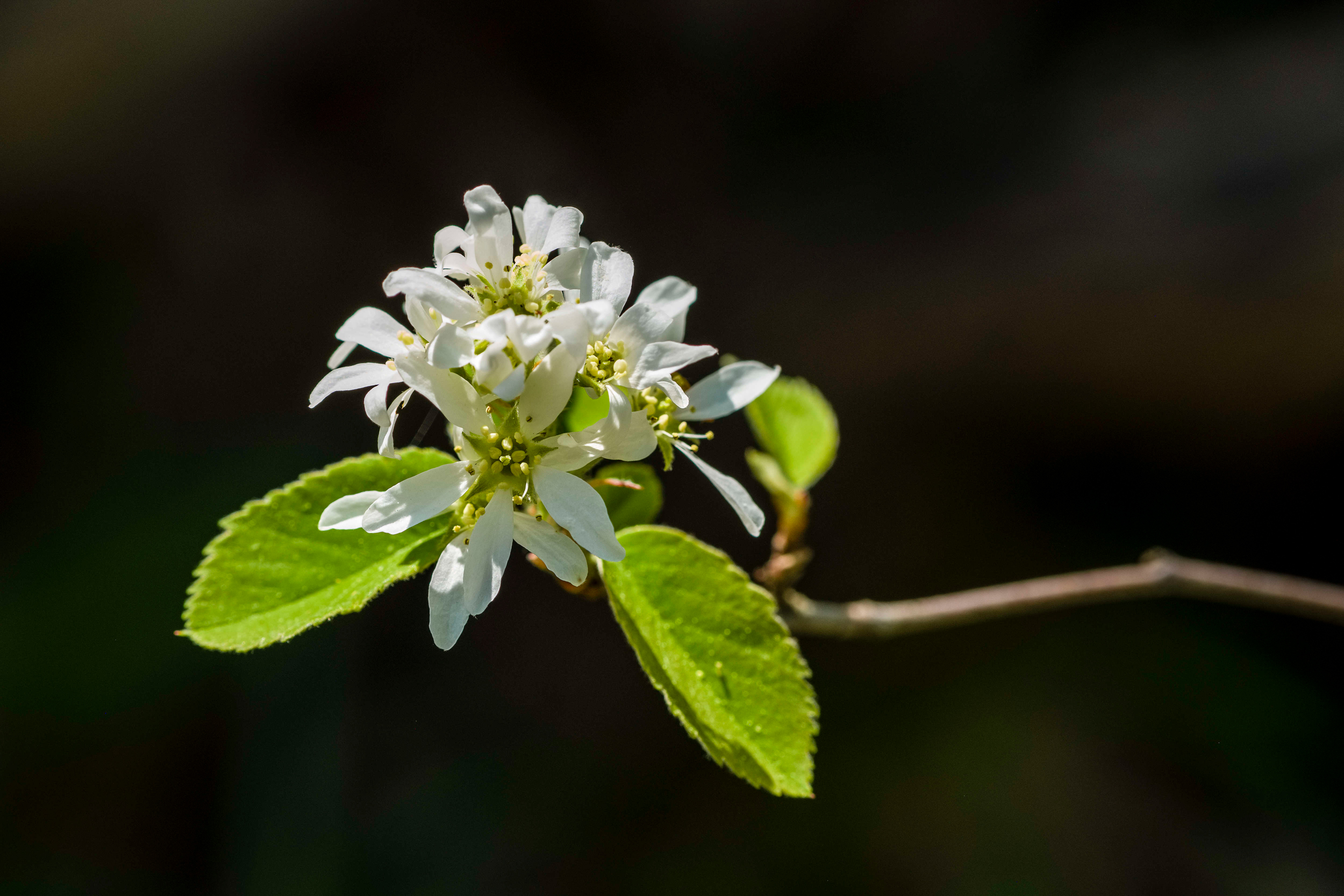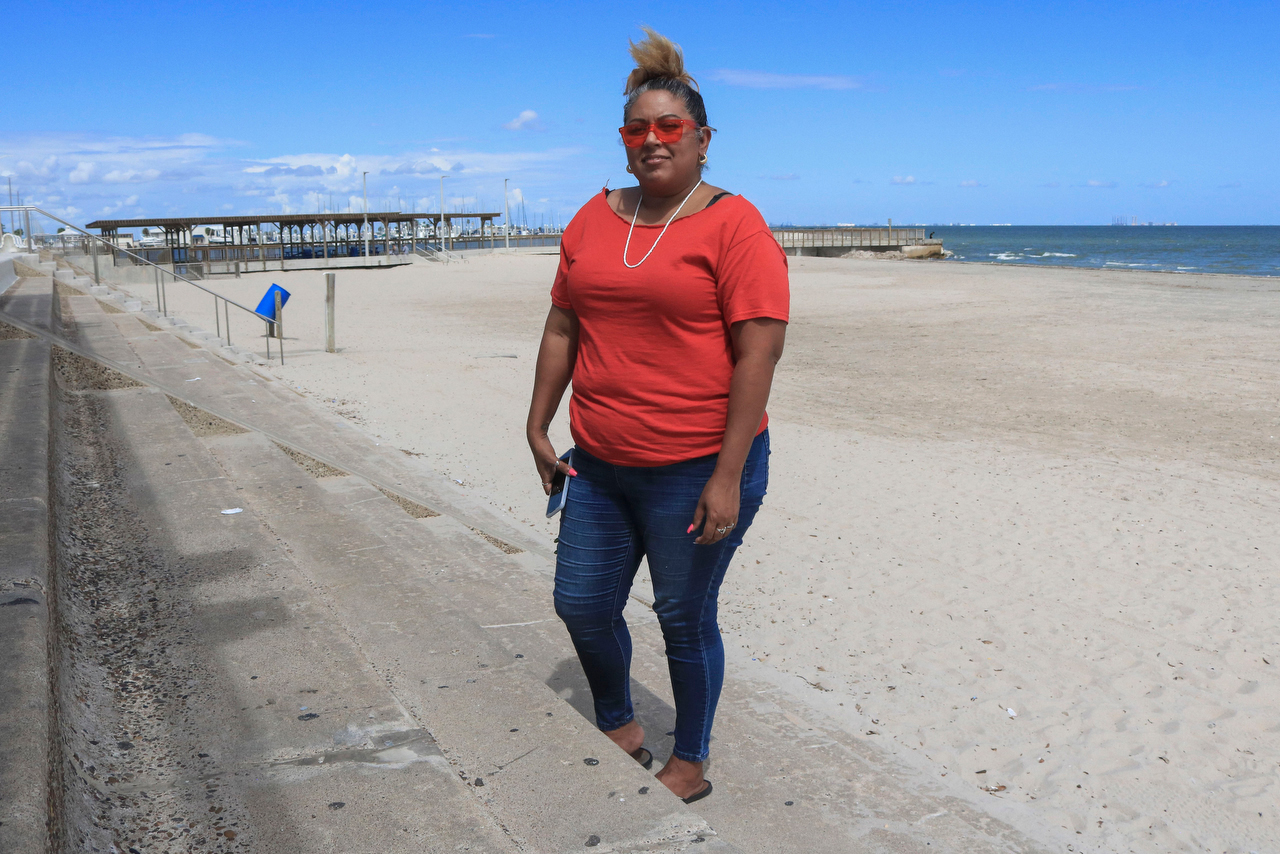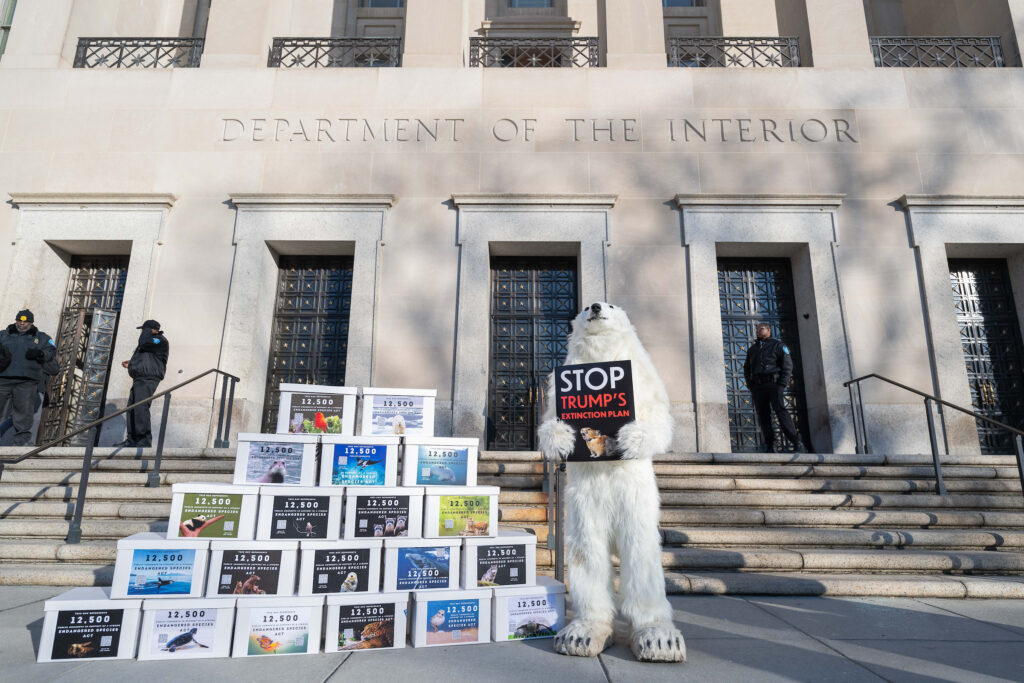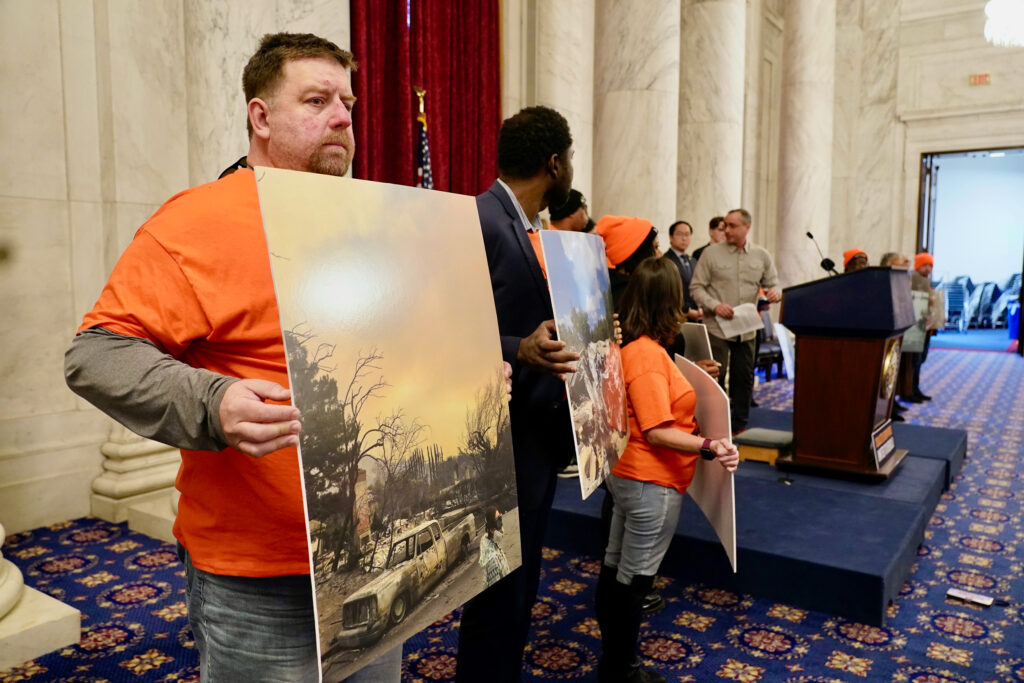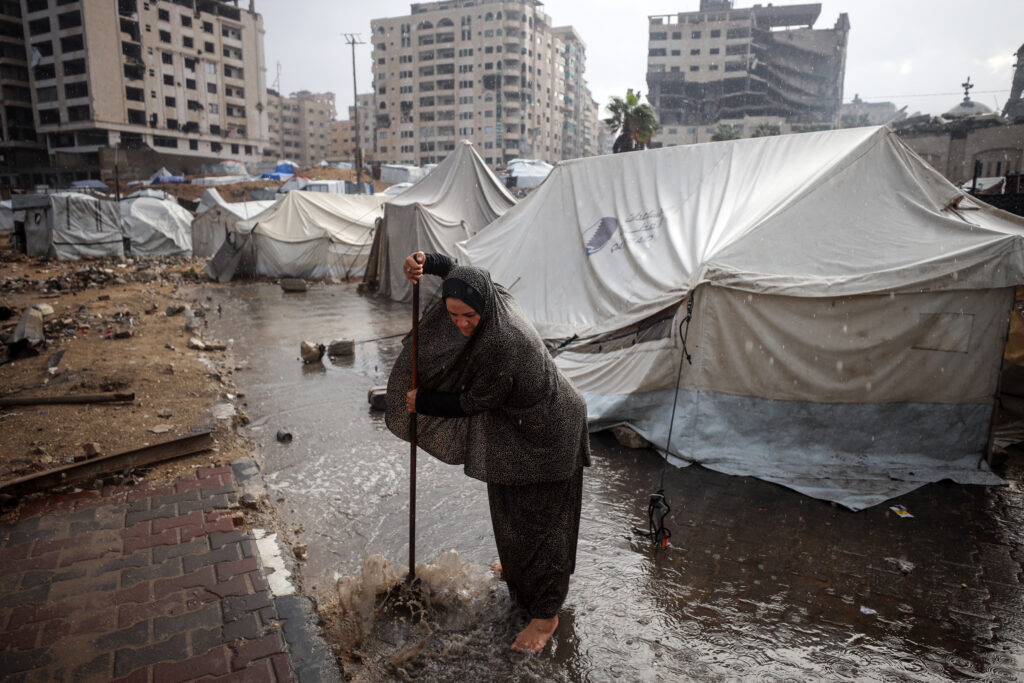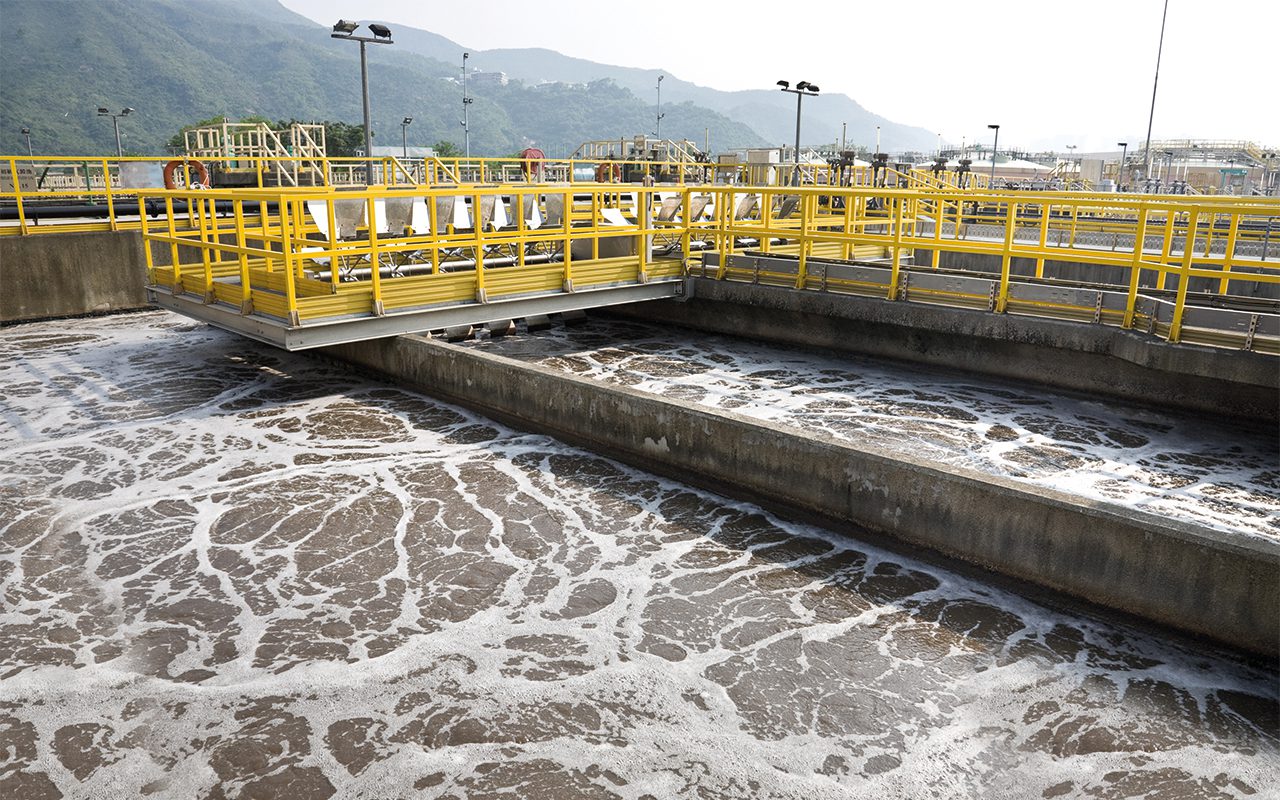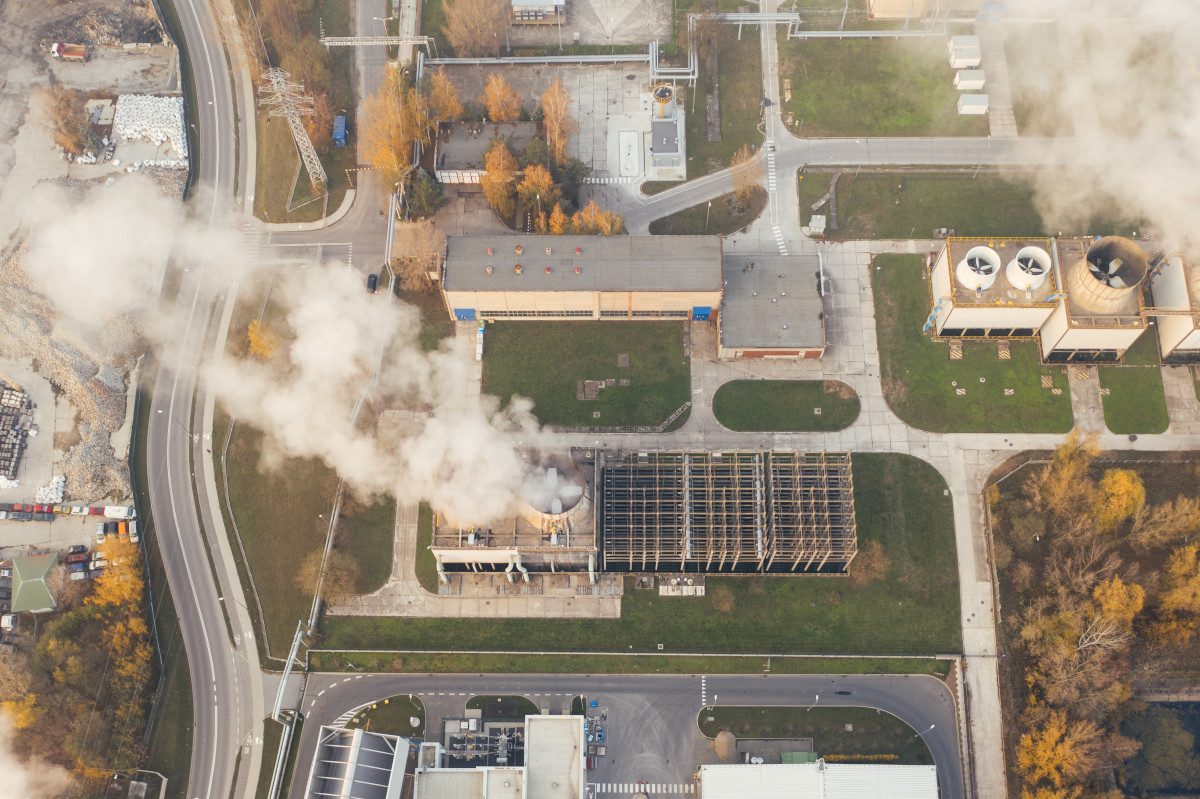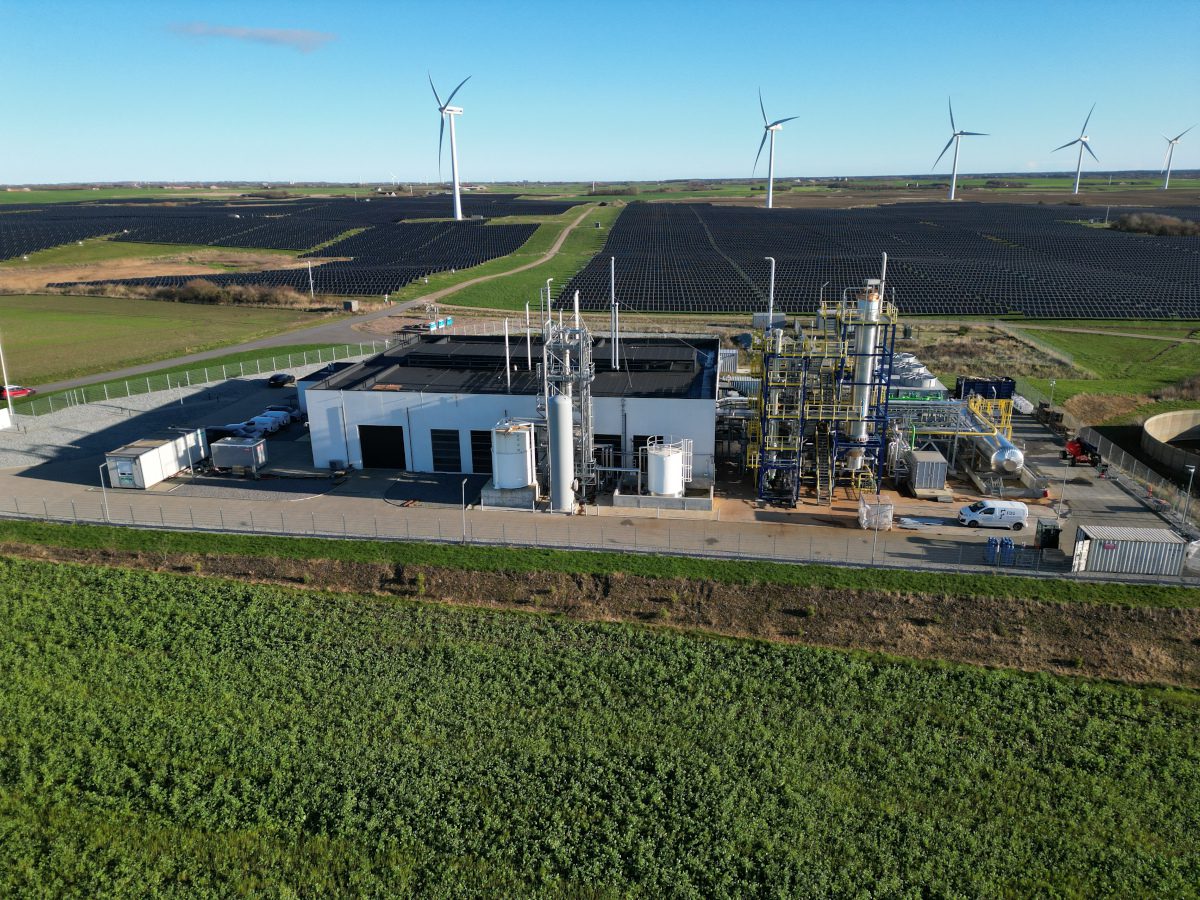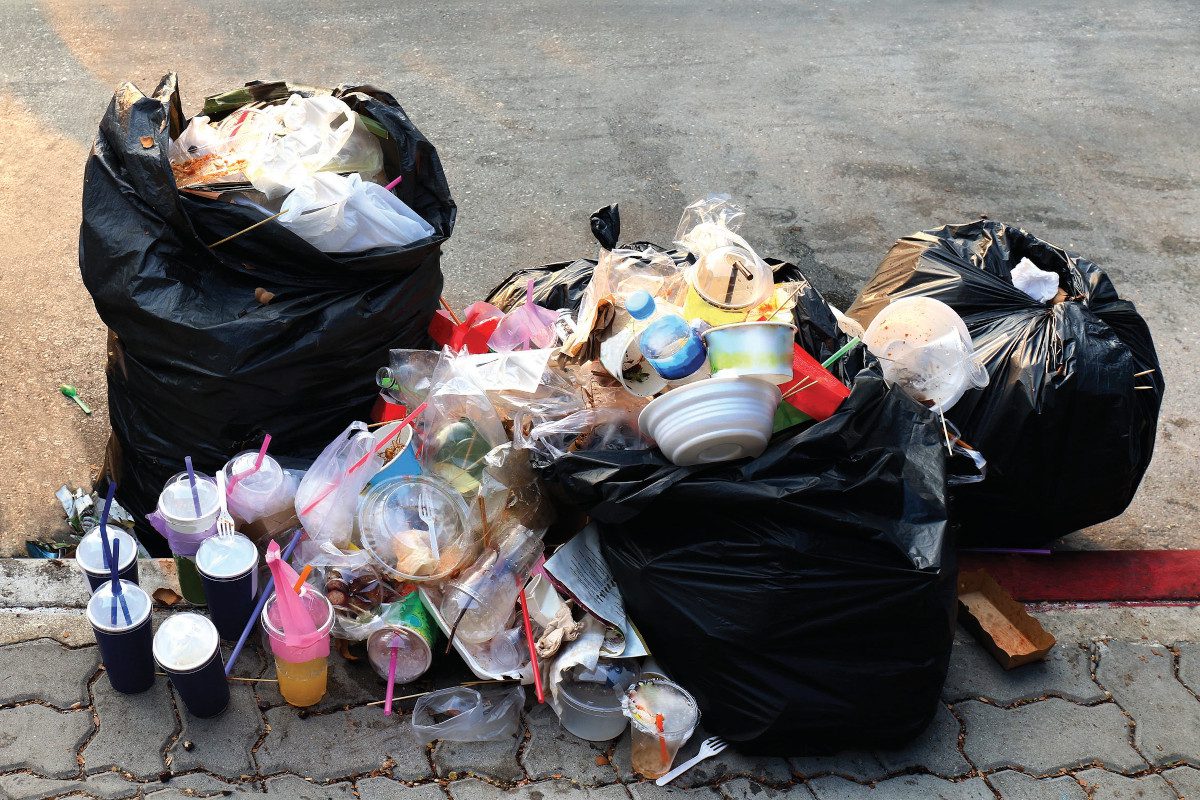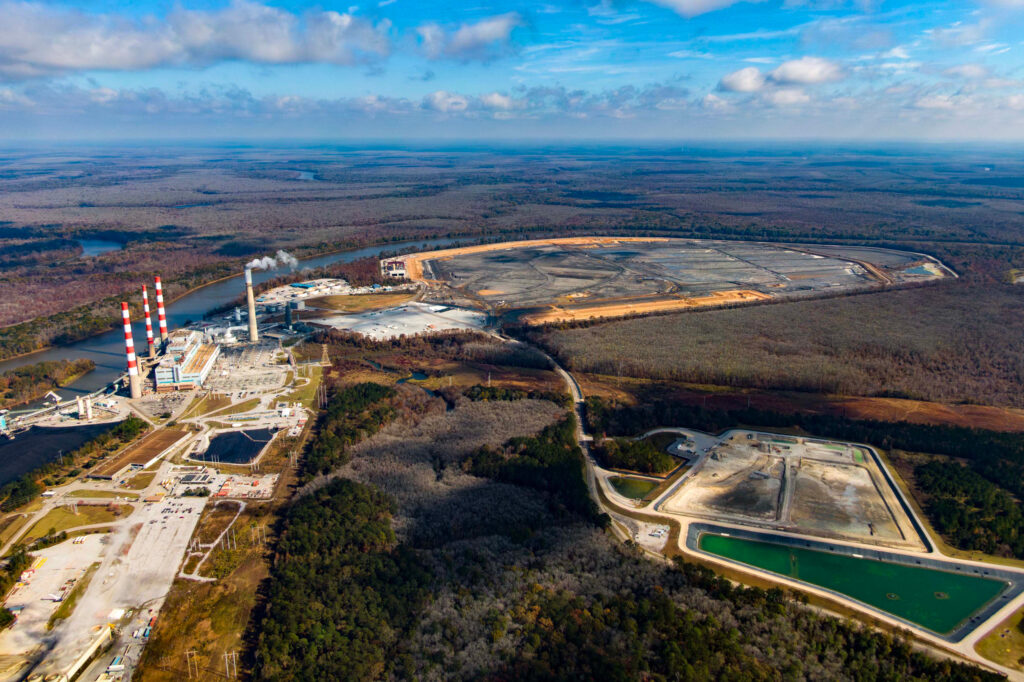Planet China: Fifth in a series about how Beijing’s trillion-dollar development plan is reshaping the globe—and the natural world.
When Jingjing Zhang saw a string of urgent texts light up her phone, she knew something had gone wrong.
Photo and video messages showed a tidal wave of brown sludge rushing into the Zambian countryside with horrifying speed.
“Can you do something?” one message asked.


Zhang sat in her Maryland home in February, scrolling through the images. She learned that for half a day, 50 million liters of waste had surged from a Chinese copper mine in sub-Saharan Africa, flooding farms and wiping out crops. Dead fish floated on the surface of rivers, including Zambia’s main artery, the Kafue. Downstream, crocodiles and hippos fled the poisoned water, now laced with acid and heavy metals.
Soon, Zhang was on a video call with a Zambian nonprofit worker discussing the mine’s operator, Sino-Metals Leach Zambia, and how she could support communities’ push for a cleanup and compensation.
She explained that Chinese companies, especially state-owned ones like Sino-Metals, often rely on the government to make problems go away at home and may press for the same treatment abroad. “Western-style advocacy won’t work,” she said. “You have to find the right approach.”
Zhang was exactly the person to ask for help. She had spent more than three decades, first in her native China and then globally, mastering how to pressure Chinese companies to be more environmentally and socially responsible. She was so successful at winning cases and pioneering new strategies that the media started calling her “the Chinese Erin Brockovich.”
After relocating to the United States in 2014, Zhang turned her attention more fully to the expanding global presence of Chinese companies. At the time, China was ramping up its Belt and Road Initiative, pouring more than $1.3 trillion into infrastructure and energy projects across the Global South. Zhang quickly recognized a troubling pattern.


The firms she’d once challenged in China were now polluting and displacing communities abroad. It struck her as exporting a dangerous development model—one she described as pollute now to get rich, and attempt to clean up later.
Her work is increasingly dicey. Over the past decade, China has broadened its reach of repression to include Chinese citizens living abroad. Zhang, still a Chinese citizen, walks a tightrope: holding Chinese companies to their government’s green promises while taking care not to overstep.
Now, she listened as the Zambian advocate described the aftermath of the copper mine’s spill from a dam holding its waste, known as tailings. The pollution infiltrated drinking water sources for hundreds of thousands of people. For millions more, it tainted rivers they rely on for fishing and irrigation. Residents living below the mine whose sustenance and income depends on the crops they grow and sell at market lost this year’s entire yield. Some people, unaware their water had become toxic, drank from it or bathed in it. Others ate the floating, dangerous fish.


Sino-Metals Chairman Zhang Peiwen said at a press conference that the company acted quickly to control the spill and the water supply in the local city had “returned to normal.”
That was not what Zhang was hearing on her call. “Peoples’ lives here,” the advocate told her, “have been completely destroyed.”
Zhang searched Chinese media for news about the tailings dam. All she could find, she said, was one Chinese-language report indicating that something had happened at the mine. The report said it wasn’t serious—and that there wasn’t a dam collapse at all.
“Under Lock and Key”
Zhang arrived in Zambia’s capital city, Lusaka, in May. Her driver idled the car outside a law office as a 10-foot gate topped with barbed wire slid open. Zhang recognized the two men waving on the other side as Andrew Kombe and Malisa Batakathi—two Zambian attorneys who were representing villagers impacted by Sino-Metals’ pollution. Zhang was here to give them practical support.
Energized despite being on the tail end of a month-long stretch of international travel, she greeted the lawyers with a hug and the three made their way inside a book-lined conference room. In casual slacks and a T-shirt, Zhang was dressed for her later journey to the mining district. But here, she was all business, talking fast and radiating intensity.
“What’s happening with the government’s testing—has it done any?” she asked.
“It’s funny,” Batakathi said. “The government is having the company that actually polluted the environment do the environmental studies.”


“Getting our own scientific evaluation of the damage is critical,” Zhang said. “Then we can consider what the best legal approach is for us.”
She reached into her purse and pulled out a blue notebook. Writing in tight, deliberate script, she recorded details about the damage, the toll on communities and the government’s response. This is always the first step in her work to support local partners. They would lead any courtroom battles, while she offered critical insights into the behavior of Chinese companies. Zhang did not advertise these services. In fact, her U.S.-based nonprofit Center for Transnational Environmental Accountability didn’t even have a public website. Word of mouth and dozens of polluting projects kept her busy enough.
“The other piece of information we need is Sino-Metals’ environmental impact assessment,” Zhang said. “Do you have that?”
The assessment, a legal requirement for any proposed project that could harm the environment, would offer insights into what went wrong with the tailings dam. Did the company know it might spill? What was it required to do to reduce that risk?
“They are supposed to be public documents,” Batakathi replied. “But they’re under lock and key.”
Kombe had faced the issue with Zambian officials before. “They’ll tell you on the sidelines, ‘Look, obviously we can’t release this without a court order—if you go to court to get a subpoena, we’ll provide it.”


It was also a familiar problem for Zhang. In many countries where she works, governments operate with little transparency. Others lack capacity or are chronically corrupt. Nearly all are deeply indebted to China, giving Beijing and its state-owned companies broad influence.
More than 12 weeks after Sino-Metals’ spill, public information about the cleanup remained scarce. The government said the Air Force had dropped lime into the Kafue River to neutralize the waste’s acidity—though that was the least of residents’ worries. Sino-Metals released a statement saying it had reinforced the tailings dam. Both company and government officials spoke of task forces assigned to monitor pollution and oversee remediation. But when civil-society groups pressed for details, like the names of the consultants hired to do the monitoring, officials either declined to elaborate or ignored the requests.
Sino-Metals also did not respond to multiple requests for comment from Inside Climate News. Nor did Zambia’s environmental ministry. A spokesperson for the ministry of mines told Inside Climate News its list of 10 questions was too many and, when provided five questions instead, said the “query will gather dust” and “the experts in the ministry are usually unwilling to release information.”
The Chinese embassy in Lusaka, asked about the spill, said in a three-page written statement to Inside Climate News that the company acted swiftly to contain it.
“Once the Ministry of Agriculture and other relevant government departments complete their assessment of the incident’s impact and confirm the compensation plan, Sino-Metals will immediately initiate formal compensation procedures,” the embassy said, adding that water quality in the region was “stabilized” with pH levels brought back to normal and citing Kafue National Park authorities as saying “the river water quality was not adversely affected.”
Later, the Finnish embassy in Lusaka would announce that its independent consultant had found high levels of 16 heavy metals—including lead, arsenic and uranium—in the tailings dam. And, on Aug. 6, the U.S. embassy in Lusaka issued a warning to U.S. citizens not to travel to areas impacted by the spill and said it had moved personnel out. “Beyond contaminated water and soil, contaminants … may also become airborne, posing a health threat if inhaled,” the alert said.


In the meeting room in May, the lawyers had far more questions than answers. Batakathi asked Zhang, “Did you see Sino-Metals’ Facebook page? They must have hired a PR company.”
The page, created after the spill, was filled with upbeat posts. “KAFUE RIVER IS ALIVE!” one declared. In another, a video showed a government official downing a glass of water drawn from a local well. And a March 31 post featured a resident saying in the local Bemba language, “Actions speak louder than words. That’s what Sino-Metals is doing. We’re not even worried.”
That was not what Kombe and Batakathi had seen during their recent visit to communities living below the mine. Most residents had lost everything, they told Zhang, and tensions were rising. At one meeting, someone threw a rock that nearly hit a nonprofit worker in the head.
Zhang was scheduled to meet that same community the next day. She had spoken with her security consultant about such scenarios, knowing from experience that mining-affected communities are nearly always deeply divided over the billion dollar-investment next door. More than once, she had seen companies offer small payments in exchange for loyalty—and a liability release. “They do it to make people silent,” she said.
“People we’ve talked with are losing hope and they’re now desperate,” Kombe said. “When they get desperate, they can be forced to sign any agreement.”
Added Batakathi: “Some people don’t even know that they have rights—If we don’t move fast, we may be too late.”
The Rule of Law
About an hour after meeting with the lawyers, Zhang peered out a dusty pickup truck window as her driver leapfrogged tractor-trailers and minibuses just north of Lusaka. They were on a two-lane rutted highway heading to the Copperbelt, a mining region straddling the border between Zambia and the Democratic Republic of Congo.
On either side of the road rose unmistakable signs of China’s presence. Walled complexes—hotels, shopping plazas and industrial firms—bore Chinese-language signs. They were markers of a deeper footprint, part of the billions of dollars Beijing had poured into Zambia over the past two decades.
Sandwiched between complexes were shacks where women squatted beside tiny pyramids of tomatoes and bundles of sugarcane. On the margins of the highway, bicyclists peddled with satchels of charcoal that were once trees, a reminder that millions of people here lack access to electricity. By nightfall, the air was thick with the acrid smell of burning plastic, lit for waste disposal.




Zhang harbors no illusions about poverty, having lived it during her own childhood in Southwest China. She believes poor countries need energy and infrastructure to improve lives. But she also thinks development doesn’t have to come at the expense of people and the environment they depend on.
She grew up on the industrial outskirts of Chengdu, where Sichuan’s fertile plains were giving way to a sprawl of chemical plants, steel mills and refineries. Her parents worked at one of the plants, her father an electrical engineer and her mother a doctor who rose to run the factory’s medical center.
It was the tail end of Mao Zedong’s Cultural Revolution, with economic development and national self-sufficiency pushed at all costs. Environmentalism was made all but impossible in the repressive political climate, with Mao espousing the philosophy that “Man must conquer nature.” Perceived enemies of the revolution were purged. Mao expected absolute loyalty.
In Zhang’s town, pollution became a fact of life. The air often stung with the bite of chemical discharge, while red and brown wastewater from the factories coursed through the rice paddies and into the creeks where Zhang played.
She was an inquisitive child, constantly probing her parents for answers about the world. From them, she learned to value independent thinking and empathy. She watched her mother quietly treat poor villagers, and learned how her father, as a college student, had been one of the millions of people the government had punished for questioning party orthodoxy. His crime: criticizing policies that caused one of humanity’s deadliest famines. He was labeled a “rightist” and sent to do menial labor. Though Zhang was too young to have her own memories of the Cultural Revolution, family stories taught her to fear ideological conformity. The trepidation of that era was even stitched into Zhang’s given name—her mother chose Jingjing, meaning “be careful,” on purpose.
Mao died in 1976, when Zhang was six, ushering in an era of reform. But the scars of the prior years endured. Some of Zhang’s most formative memories were shaped by government rationing. Her parents, like everyone else, received coupons to buy their limited share of basics like rice and sugar from state-owned stores.
Against this backdrop, Zhang came to value hard work as a pathway to self-improvement. Her parents had transformed their own lives through university education and taught their daughter that nothing would be handed to her. She studied as her friends played, and that discipline carried her through university and onto law school in Wuhan in 1987.
At that point, China was experiencing its most politically open moment in modern history. Reformist leaders stirred hopes of an even more open future. On law campuses across the country, students debated legal philosophy, reading books that introduced concepts like separation of powers, access to justice and due process.
“We had grown up thinking communism was the only correct path,” Zhang said in a recent interview. “Now we were seeing there were alternatives.”
That openness laid the groundwork for a student movement that erupted in the spring of 1989. Students poured into Beijing’s Tiananmen Square, calling for an end to corruption and for greater political freedoms.
On June 4, Communist Party leader Deng Xiaoping ordered a military crackdown on the protesters, killing thousands. In the aftermath, the government took extensive measures to erase the event from public consciousness—suppressing the media, controlling the internet and branding peaceful protesters as violent terrorists. Today in China, there is virtually no trace of what truly transpired in Tiananmen Square on June 4, 1989.
It wasn’t until 2004, while visiting the U.S., that Zhang realized how the massacre had shaken the world. Her host, a California judge, showed her news clippings and a photo of Tank Man, an unknown person who faced down a row of military tanks in the square.


China’s crackdown stood in stark contrast to the democratic wave sweeping the globe. As the Cold War ended, new democracies emerged across Latin America and Asia. But Beijing doubled down on economic growth as proof of its legitimacy, rather than a system where people freely choose their government. The legal system built in post-Mao China reflected that choice—designed not to protect citizens’ rights, but to control society and reassure foreign investors.
It was at this moment that Zhang graduated from law school. She took a job in the legal department of a government-run business association tasked with attracting international investment. She saw firsthand how local officials, under pressure to deliver economic results, routinely fast-tracked projects and turned a blind eye to pollution.
While advising on a deal between a local government and a foreign textile company, Zhang asked about the required environmental impact assessment. A city official assured her they would be handled, regardless of the factory’s potential impact. The experience repeated often enough that Zhang, on track for a lucrative commercial career, felt morally compelled to resign.
She had decided to switch sides.
The Chinese Miracle
Zhang first encountered the idea of environmental advocacy at 17, after reading about Greenpeace’s Rainbow Warrior ships protesting whaling and nuclear weapons testing. The notion of environmental justice had enthralled her. A decade on, it impelled her. She joined the legal-aid group Center for Legal Assistance to Pollution Victims.
Working out of an apartment-turned-office on a shoestring budget, she helped win China’s first environmental class-action suit, brought against a chemical company that had polluted Fujian Province’s water sources with heavy metals. She took on paper mills, tanneries and power plants. Her work traversed the country.
In Inner Mongolia, she aided herders and pear farmers harmed by a copper smelter. In Beijing, her work helped force China’s first public hearing on pollution. The precedent paved the way for routine environmental impact assessments, leading to the suspension or cancellation of dozens of problematic projects in the years that followed.
China’s pollution at the time was staggering. Air quality was on par with 1800s smog-choked London. By 1989, industrial and other waste contaminated more than 80 percent of rivers. Heavy metals seeped through the soil. Public health suffered, with pollution linked to early death, cancer and other diseases.


In one case, Zhang took on a state-owned mining company whose tailings pollution had turned a river brown and created a “cancer village.” Before her involvement, the company had paid the village of 400 people about $200 total, roughly 50 cents per person. The court dismissed Zhang’s lawsuit, citing the prior payout, she said.
She faced a pattern of such challenges. Courts refused to hear politically sensitive cases, and she repeatedly saw the government wielding the law to shield the state and its companies, rather than to protect its citizens.
Even so, Zhang, a serial optimist, used legal losses as teaching tools. She educated communities about their rights and reminded officials that protecting nature could prevent costly disasters and unrest. Over time, she came to believe that even in a system lacking judicial independence, justice was possible. Things could be different. They could get better. But they had to be fought for.
Her work drew global attention, leading to conference invitations and prestigious fellowships. While abroad, she heard disturbing accounts of deforestation, polluted rivers and displaced communities linked to Chinese-financed infrastructure projects overseas.
So around 2009, she began tracking China’s “going out” policy, an early 2000s push encouraging overseas investment. What troubled her was seeing Chinese companies, now held to higher standards at home, exporting their sloppy practices to poorer nations.
Also around that time, she relocated to the United States for family reasons, but she continued to work in China, shuttling between Washington and Beijing.
The rise of Xi Jinping to China’s presidency in 2013 changed everything.
The son of a revolutionary purged under Mao, Xi launched the harshest attack on Chinese civil society since the aftermath of Tiananmen Square. On July 9, 2015, in what became known as the “709” crackdown, authorities abducted, disappeared or jailed 300 human rights lawyers and activists. A sweeping national security law followed, giving officials power to target activists and making it nearly impossible for foreign nonprofits to operate. He also increased efforts to silence dissidents and activists living overseas, if their work is perceived as critical of the government or its policies.
Meanwhile, Xi ramped up China’s overseas presence with his signature Belt and Road Initiative, promoting it as a “road for peace” and positioning China as a benevolent global leader. Xi made “telling good stories about China” central to his foreign policy, pushing a narrative centered on “the Chinese miracle” of lifting millions out of poverty.
Zhang, who had lived this, eventually shifted her work to focus solely on China’s overseas investments. She traveled to Ecuador, Mexico, Guinea, Zimbabwe, the DRC and beyond. Convincing some environmental groups to pay attention to this initially proved challenging. In 2018, one organization told her that their China-related work had to stay inside China. Zhang told them they were shortsighted.
“By the time people caught on,” Zhang said recently, “it was too late.”
Surveillance
On her first morning in Zambia’s Copperbelt, Zhang took a bumpy truck ride to a one-room mud brick building with a roof made from a patchwork of rusted metal sheets. Beside it, a few villagers and a child half-hidden behind a bicycle gathered in a slice of shade near a water pump. A red plastic bucket sat below the pump, ready for use.
This was one of the communities below Sino-Metals’ tailings dam. The Chinese embassy, in its statement, said the company was providing bags of ground maize, known as “mealie meal,” as well as drinking water, cooking oil and financial assistance to affected residents. The embassy also said the company worked with local officials to restore drinking water supplies, was cooperating fully with government-led assessments and that its efforts to help were a voluntary part of Sino-Metals’ “Corporate Social Responsibility and its care for community well-being.”
As Zhang looked out into the village, one man walked toward the truck. Boniface Sichalwe, 53, jumped in and led her to where the tailings sludge had rushed through the community. The site was a wide strip of choked reeds and flattened, brittle grasses and crops.
Last year, drought devastated Zambia’s food supply. But recent rains were plentiful. Farmers like Sichalwe had been hopeful. “Before the collapse, I had three fish ponds,” he said. “Sugarcane, cabbage, grapes, everything. Now, two seasons—everything is gone.”




He typically earned $1,800 for each year’s harvest. Since the dam accident, Sino-Metals told him not to farm here or use the groundwater, he said. They had given him two payments of $35 amid the discussions of government-required compensation to come and occasionally dropped off a bag of mealie meal and cooking oil, he said.
“I’m broken,” he said softly. “Even now, I can’t think straight.”
Zhang asked if he’d received any clarity from the company or government, like a plan for new land he could move to.
He shrugged. “We don’t know.”
Before she could respond, a white pickup truck pulled up behind them. Two Chinese men stepped out. One walked toward a pool of water about 20 yards from Zhang. He dipped an empty plastic water bottle into the pool, stared at Zhang and walked back to the truck.
“Someone must have told them foreigners were coming,” Zhang whispered. “That was fast.”
It was the first time she had felt this surveilled in the field. She’d had her share of sticky situations. In rural Colombia she had to hide on the floor of a car to avoid paramilitary groups mistaking her for a Chinese mine worker. But this was different. She’d never been tracked so openly.




Now, Zhang watched the men drive off, figuring they were Sino-Metals officials. She and Sichalwe returned to the water well where more villagers had gathered to tell Zhang their stories. A woman in a ripped blue T-shirt started. Most villagers relied on selling what they grew, she said. And when there was no income, they survived on food from their gardens. “That’s gone now,” she said. “The company brings us small bags of water—like IV drips.”
One after another, voices rose. An old man whose vision had become cloudy after contaminated flood waters splashed into his face. A young farmer who could no longer afford his rent. A teenager rattled by the uncertainty. “How much longer do we have to wait? We can’t survive on bags of mealie meal,” the boy said. “Now we just look up at the mine and hope.”
Then the white truck reappeared. This time, two local men hopped out and stood silently in the back of the group. The Chinese men drove off.
Zhang stiffened but kept taking notes. She suspected company officials were planting spies in the meeting.


After the testimonies, she spoke with young mothers as a toddler tugged on the well handle, drawing water that couldn’t be used. “They said they ran tests,” said Memory, 28, holding her daughter, Margaret. “But what are the long-term effects?”
Zhang asked, “Did the company come to explain what will happen, what their plan is?”
“No,” Memory said. “We don’t know what will happen.”
On the ride out of the village, Zhang reflected on the power imbalance between the company and villagers. The community needed organizing and training about their rights, she told her Zambian guide. Surveillance would make that hard.
“I’ve been to a lot of communities,” she said. “But this? This is a message. They’re watching. They want the community to know it too.”


State Secrets
The unease from being surveilled lingered into the next day. That morning, Zhang met with Copperbelt residents affected by Rongxing Investments, a private Chinese mining company with its own tailings dam failure.
The company said in an email to Inside Climate News that heavy rainfall caused its tailings to overflow on March 1 and that by the next day the company had sealed the breach. “Very little tailings overflowed onto the buffer open area within the plant premises, without directly affecting the surrounding environment,” the statement said.
But at her meeting with dozens of villagers living below the mine, Zhang heard about pervasive pollution problems and families evicted from homes to make way for expanding operations.






Now, en route to a local university, she counted the tailings dams visible from her window, artificial-looking mountains of slag hovering above small villages. She wondered how many more dotted the Copperbelt. She had seen worse just across the border in the DRC—children scrambling barefoot up the slopes, searching for scraps of metal in the toxic dust.
China is the world’s top mineral producer and consumer, investing billions to procure lithium, nickel, manganese, copper and other key materials for solar panels and electric cars. But Zhang doesn’t view those mines as “green.” She’s seen too many accidents and sloppy practices. One woman she met that morning said mine pollution had turned the people of her community into “walking coffins.” Zambian officials, the villager said, had “sold us out.”
Those words stuck in Zhang’s head as she arrived at her next meeting. She took a seat in a small white-walled room filled with beakers and test tubes. She hoped the three scientists across from her—whose names she did not want made public for fear they might be targeted—could test the pollution from Sino-Metals.
They had already shared a preliminary proposal and cost: $20,000. The expense was one of the challenges of public-interest work. Companies could spend millions defending themselves, but communities struggled to raise even a fraction of that.
The lead researcher outlined their plan: testing water contamination, aquatic life, heavy metals in sediment and ecological impact on surrounding vegetation and animals. “We can test just the local area,” he said. “But we know the contamination has flowed from the Mwambashi River into the Kafue River, and from there to the Central Province—it’s in floodplains, national parks and all the way to Chirundu, where the river joins the Zambezi.”
“What kind of timeline would this take?” Zhang asked.
“Sample collection alone could take two weeks,” the researcher said. “But if we do the whole stretch downstream, it’s longer.”
“It’s restricted. They keep what happens inside a secret.”
Zhang looked at her notebook. She knew they needed solid studies to shape their strategy and to stand any chance in court. She told the men about a 2007 iron-ore mining case she handled in China, where cadmium pollution had contaminated rice crops and spiked cancer rates. “What do you think about the heavy metal contamination?” she asked.
“People here depend on the river to water their crops and for fish,” the researcher said. “Animals draw from the same waters—their breeding systems are in the rivers’ floodplains.”
“Has anyone from your team been inside the mine?” Zhang asked.
The researcher shook his head. “It’s restricted. They keep what happens inside a secret.”
Zhang hoped the scientists had seen the elusive environmental impact assessment she needed to help gauge whether the company had been negligent. “Do you have any technical standards for Sino-Metals’ management of the dam—have you read their environmental impact assessment?”
“We think it used to be on the ZEMA website,” the researcher said, referring to Zambia’s environmental ministry. “But after the collapse, they must have pulled it down.”
“They took it down?”
He nodded. “We looked. It’s gone.”
Pressure Points
“How many of you have heard of China’s Belt and Road Initiative?” Zhang asked a table of about a dozen members of Zambian civil society, back in Lusaka.
Only one hand went up. These were lawyers, environmental activists, researchers and community organizers. Most were familiar with the havoc some Chinese companies had caused. But few understood China’s political culture or opaque bureaucracy. Zhang, on the last day of her trip, wanted to demystify that.
“Why do you need to understand China?” Zhang asked, answering her own question: to know who has power over these investments.
On the screen behind her, a slide displayed a diagram of China’s government, with “A Single-Party State” written at the top. Unlike Western firms beholden to shareholders and market pressures, Chinese companies primarily answer to the Chinese Communist Party, Zhang explained. That makes some traditional advocacy strategies less effective, she said, “but there are a range of tools you can leverage.”


She clicked through official policy statements and documents: Xi Jinping’s speeches, agency guidelines and pledges to “green” the Belt and Road. “They aren’t binding laws,” Zhang explained, but they signal the government’s priorities—a powerful thing in China.
She pointed to a 2022 policy statement. “I want you to become very familiar with this,” Zhang said, highlighting language urging Chinese companies to meet best international environmental standards or more stringent Chinese rules. “When you meet with company officials or embassy staff, bring this with you,” Zhang instructed. “Ask, ‘Why didn’t you follow this guidance?’”
Many companies don’t know these policies exist, she explained, looking at Kombe and Batakathi, the attorneys she’d met with at the start of her trip. “This is where Zambian lawyers can play a role.”
This story is funded by readers like you.
Our nonprofit newsroom provides award-winning climate coverage free of charge and advertising. We rely on donations from readers like you to keep going. Please donate now to support our work.
Donate Now
When it came to tailings dams, Zhang said lawyers could compare allowable pollution levels under Chinese and domestic law. She’d used that tactic in Ecuador, filing an amicus brief that showed how a Chinese company had violated both Ecuador’s law recognizing Indigenous peoples’ rights and China’s endorsement of those rights in international law—though the Chinese Communist Party maintains China has no Indigenous peoples.
She outlined other strategies: Some Chinese companies are publicly listed, opening up international advocacy avenues. The United Nations human rights system, environmental treaties and regional human rights courts could also be leveraged. “Your strategy with Rongxing, a private company,” Zhang said, “will be different from state-owned Sino-Metals.”
The presentation sparked a wave of questions, many aimed at the gap between China’s green rhetoric and the realities on the ground. “Companies have a field day when they come here,” Kombe said. “They can do whatever they want.”


Others asked what could be done inside China. Could civil society groups there help?
“Unlike activists and civil society in the U.S. and E.U., you won’t have many options in China,” Zhang said. Still, she noted, there were people like her working on this problem from outside their home country.
“What are the chances of suing companies in China?” someone asked, wondering if Zambians could take Chinese companies to court there.
“It’s never been done,” Zhang replied. It would take a Chinese NGO and lawyers “to go to the courts for us—no one is going to take that risk.”
“There Is Always a Way”
For Zhang, this work isn’t about money. She’s never chased contingency fees or the kind of fame some crusading lawyers seek. Her rewards are quieter: a nonprofit salary, the trust of community partners, fragile progress.
“I believe every case is a step forward,” she said during a recent interview. “Even if we lose, we show people that the law can be a tool for them—that they have rights.”
She’s come to see freedom as a delicate thing. In China, she witnessed how quickly the gains she and her colleagues achieved had disappeared. After Tiananmen and the 709 crackdown, many human rights defenders fled to Hong Kong. Then came the 2019-2020 crackdown on pro-democracy activists in the semi-autonomous city, driving many into exile.
These losses have impacted her personally—in some ways she won’t speak about publicly. She hasn’t returned to China since 2018, and when her parents passed away in 2022 and 2024, the pandemic and safety concerns kept her from traveling back. She longs to show her own children the places she memorized as a child. But going back under the current political climate is untenable.
In recent years, she’s watched uneasily as the U.S.—once a beacon for human rights defenders—has echoed some of the tactics of authoritarian countries: crackdowns on dissent; attacks on law firms and judges; rolling back environmental protections.
For environmentalists new to working in a more constrained environment, Zhang has some advice she’s drawn from Sun Tzu’s “The Art of War.”
“Understand who your opponent is and who your allies could be,” she said. “Form your strategies and identify your tactics.”
After her trip, the Zambian government announced that Sino-Metals and Rongxing would pay a combined $16.2 million kwacha to more than 700 farmers as compensation for pollution. That equates to about $1,000 in U.S. dollars per person, or about $800 less than what Sichalwe said he earns in a year from his farm. There was no indication anyone would receive new farmland or compensation for medical harm, and the announcement was made without a completed assessment of the extent of pollution and health impacts.


Sino-Metals and Rongxing began distributing the payments at the end of July. Civil society workers monitoring the situation told Inside Climate News they ranged from a high of around $2,000 to $17. There was no explanation about the logic behind the differences, they said.
Separately, Zambia announced that Sino-Metals did not follow a government order to provide an assessment of its pollution, a first step for remediation. The environmental ministry said it will now carry out the assessment, and the company will be responsible for the costs. “This report will form the basis for the clean-up efforts and other necessary environmental restoration and remediation measures,” the June announcement said. In July, nearly five months after the spill, the ministry put out a call for bids from consulting firms to do the assessment.
Zhang is pressing on. In June, she returned to Zambia and is continuing to build the case there, one of many on her to-do list.
“I want to keep my optimistic spirit,” she said. “There are ways to use the law. There is always a way.”
About This Story
Perhaps you noticed: This story, like all the news we publish, is free to read. That’s because Inside Climate News is a 501c3 nonprofit organization. We do not charge a subscription fee, lock our news behind a paywall, or clutter our website with ads. We make our news on climate and the environment freely available to you and anyone who wants it.
That’s not all. We also share our news for free with scores of other media organizations around the country. Many of them can’t afford to do environmental journalism of their own. We’ve built bureaus from coast to coast to report local stories, collaborate with local newsrooms and co-publish articles so that this vital work is shared as widely as possible.
Two of us launched ICN in 2007. Six years later we earned a Pulitzer Prize for National Reporting, and now we run the oldest and largest dedicated climate newsroom in the nation. We tell the story in all its complexity. We hold polluters accountable. We expose environmental injustice. We debunk misinformation. We scrutinize solutions and inspire action.
Donations from readers like you fund every aspect of what we do. If you don’t already, will you support our ongoing work, our reporting on the biggest crisis facing our planet, and help us reach even more readers in more places?
Please take a moment to make a tax-deductible donation. Every one of them makes a difference.
Thank you,












